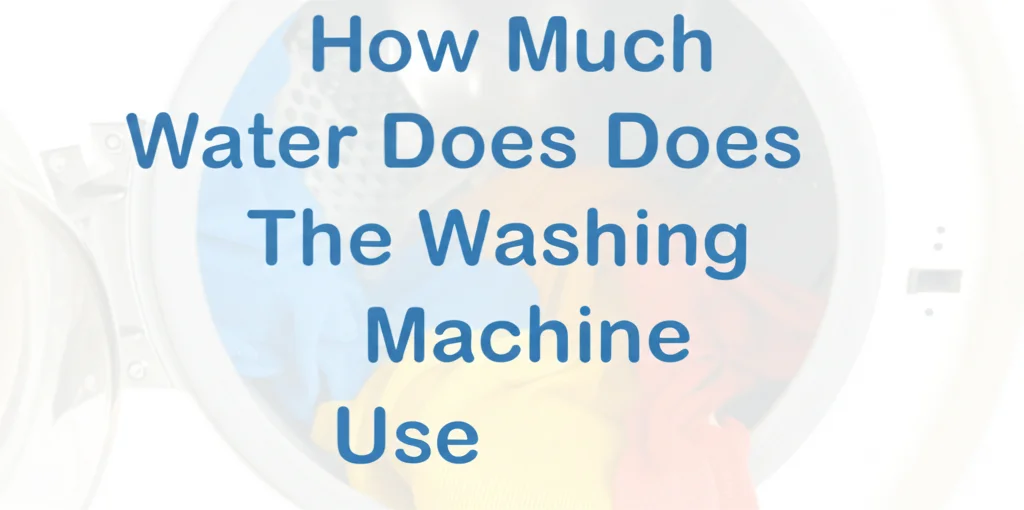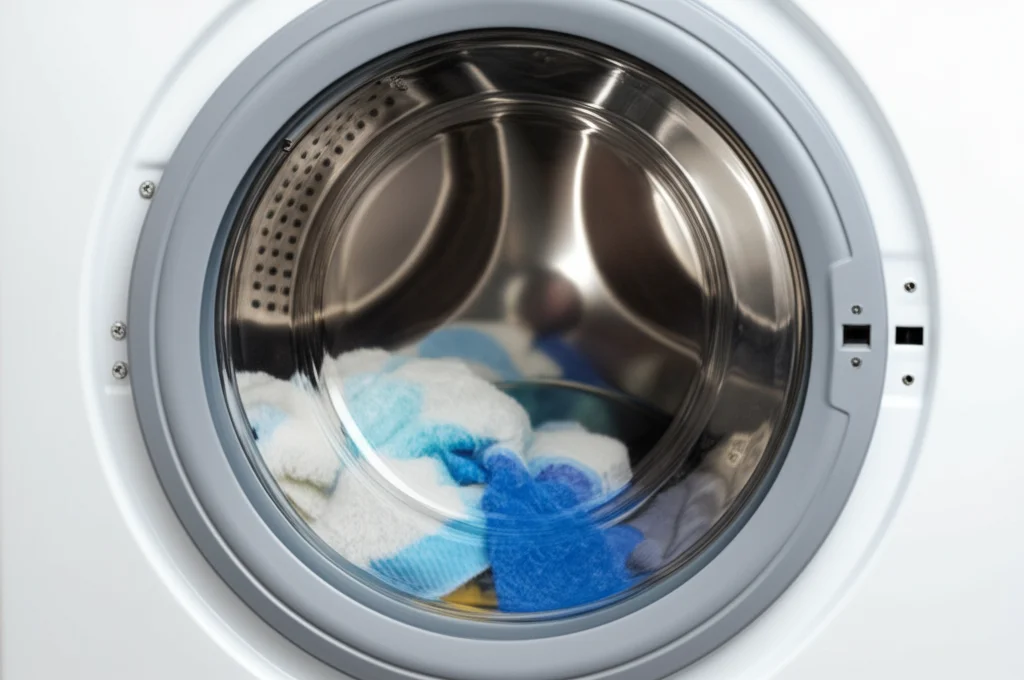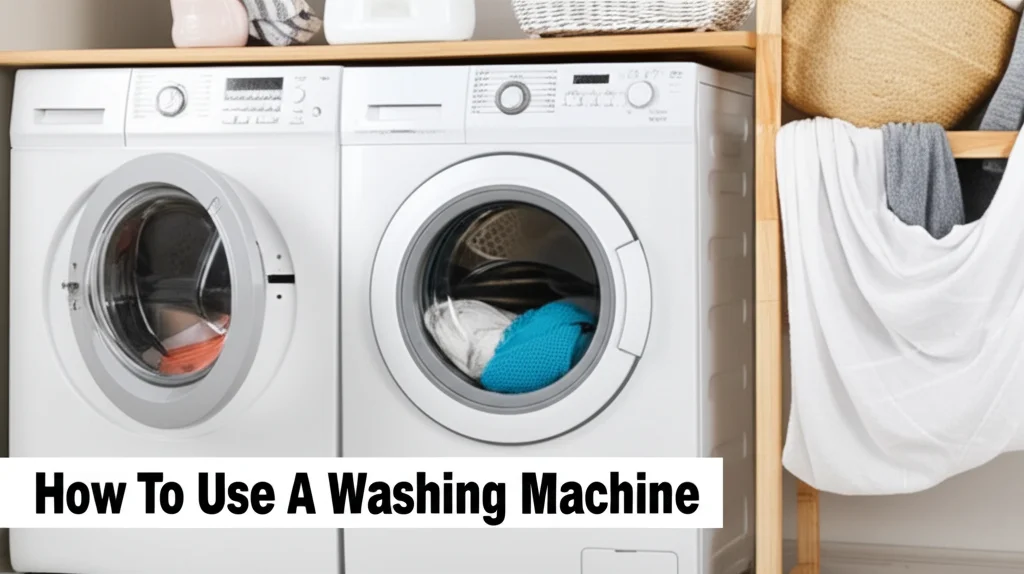· Laundry · 7 min read
How Much Water Does The Washing Machine Use

How Much Water Does Your Washing Machine Really Use?
Have you ever wondered just how much water your washing machine gulps down with every load? It’s a valid question, especially as we become more conscious of our water footprint and utility bills. Understanding your washing machine’s water usage isn’t just about saving money; it’s about contributing to a more sustainable lifestyle. This article will dive deep into the world of washing machine water consumption, exploring the differences between models, the factors that influence usage, and practical tips to help you conserve water. We’ll cover everything from older top-load machines to modern high-efficiency washers, giving you the knowledge you need to make informed choices about your laundry habits.
Here’s a quick answer: On average, a standard top-load washing machine uses around 40 gallons of water per load, while a high-efficiency (HE) front-load machine uses between 13-15 gallons. However, this can vary significantly based on the machine’s age, settings, and load size.
Takeaway:
- HE washers save water: Switching to a high-efficiency washing machine is the biggest step you can take.
- Load size matters: Always wash full loads to maximize efficiency.
- Use appropriate settings: Select the correct water level and wash cycle for your laundry.
The Evolution of Washing Machine Water Usage
Washing machines have come a long way! Older models, particularly top-load machines, were notorious for their high water consumption. These machines typically filled the entire drum with water, regardless of the size of the load. This meant a significant amount of water was wasted with every wash. Thankfully, advancements in technology have led to more water-efficient designs.
The introduction of high-efficiency (HE) washing machines, primarily front-load models, revolutionized laundry practices. These machines use significantly less water because they don’t require a full drum of water to effectively clean clothes. They tumble clothes through a small amount of water, relying on gravity and efficient agitation to remove dirt and stains. This shift represents a major step towards more sustainable laundry habits.
Top-Load vs. Front-Load: A Water Usage Comparison
Let’s break down the water usage differences between top-load and front-load washing machines. Traditional top-load washers, as mentioned, typically use around 40 gallons of water per load. Some older models can even use up to 50-60 gallons! This is because they rely on completely submerging the clothes in water for cleaning.
Front-load HE washers, on the other hand, are designed to use significantly less water. They generally use between 13 and 15 gallons per load, and some even use as little as 9 gallons. This dramatic reduction is due to their tumbling action and efficient water usage. While front-load washers often have a higher upfront cost, the long-term water savings can offset that expense. If you’re looking to reduce your water bill and environmental impact, a front-load HE washer is a smart investment.
Factors Influencing Washing Machine Water Consumption
Several factors can influence how much water your washing machine uses. Understanding these factors can help you optimize your laundry routine and conserve water. The load size is a major factor; washing small loads in a machine designed for large loads wastes water.
Here’s a closer look at some key influences:
- Load Size: Washing smaller loads when you could combine them into a larger load is a common source of water waste.
- Wash Cycle: Different wash cycles use varying amounts of water. Delicate cycles typically use more water to ensure gentle cleaning, while quick wash cycles use less.
- Water Level Settings: Many machines allow you to select the water level based on the load size. Always choose the appropriate level to avoid wasting water.
- Machine Age: Older machines are generally less efficient than newer models.
- Machine Type: As discussed, front-load HE washers are significantly more water-efficient than top-load machines.
Decoding Water Factor and Energy Star Ratings
When shopping for a new washing machine, pay attention to the Water Factor (WF) and Energy Star ratings. The Water Factor is a measure of how much water a washing machine uses per cubic foot of capacity. A lower WF indicates a more water-efficient machine.
Energy Star certified washing machines meet strict energy and water efficiency guidelines set by the Environmental Protection Agency (EPA). These machines are designed to use less water and energy, saving you money and reducing your environmental impact. Look for the Energy Star label when making your purchase to ensure you’re choosing a water-efficient model. You can find more information about Energy Star certified appliances on the Energy Star website.
Simple Tips to Reduce Your Washing Machine’s Water Usage
Conserving water in the laundry room doesn’t require a major overhaul. Small changes to your habits can make a big difference. Always wash full loads whenever possible. This maximizes the efficiency of your machine and reduces the number of loads you need to run.
Here are some additional tips:
- Wash Full Loads: Avoid washing small loads whenever possible.
- Use Cold Water: Washing clothes in cold water saves energy and can also reduce water usage.
- Select the Right Cycle: Choose the appropriate wash cycle for your laundry.
- Use the Correct Water Level: Adjust the water level to match the load size.
- Consider a Water-Saving Laundry Detergent: Some detergents are designed to work effectively in low-water conditions.
- Regularly Maintain Your Machine: A well-maintained machine operates more efficiently. If you’re looking for ways to maintain your home, you might want to check out how to clean your washing machine drawer hotpoint.
The Future of Washing Machine Technology and Water Conservation
The future of washing machine technology is focused on even greater water efficiency and sustainability. Manufacturers are constantly developing new innovations to reduce water consumption and minimize environmental impact. Greywater recycling systems, which reuse water from the washing machine for other purposes like irrigation, are becoming increasingly popular.
We can also expect to see more advanced sensors and smart technology that automatically adjust water levels based on the load size and soil level. These advancements will continue to drive down water usage and make laundry a more environmentally friendly chore.
Frequently Asked Questions (FAQs)
Q: How much water does an old washing machine use compared to a new one? A: Older top-load washing machines can use 40-60 gallons per load, while newer high-efficiency (HE) front-load machines use only 13-15 gallons. The difference is significant, making upgrading a worthwhile investment for water conservation.
Q: Can I reduce water usage with my current washing machine? A: Yes! Washing full loads, using cold water, selecting the appropriate wash cycle, and using the correct water level can all help reduce water consumption with your existing machine.
Q: What is the Water Factor (WF) and why is it important? A: The Water Factor (WF) measures water usage per cubic foot of capacity. A lower WF indicates a more water-efficient machine, helping you choose a model that conserves water.
Q: Are front-load washers more expensive to repair than top-load washers? A: Front-load washers can sometimes be more expensive to repair due to their more complex components. However, their increased efficiency and water savings can often offset these potential repair costs over the machine’s lifespan.
Conclusion
Understanding how much water your washing machine uses is the first step towards more sustainable laundry practices. From the evolution of washing machine technology to the simple tips you can implement today, there are numerous ways to reduce your water footprint. Choosing a high-efficiency washing machine, washing full loads, and using appropriate settings are all effective strategies. By making conscious choices about your laundry habits, you can save water, lower your utility bills, and contribute to a healthier planet. So, take a look at your current machine, consider your laundry routine, and start conserving water today!




